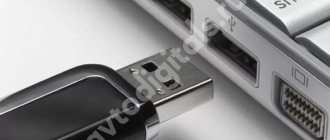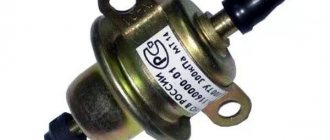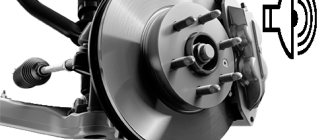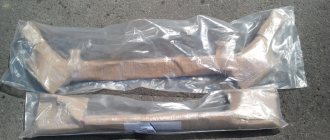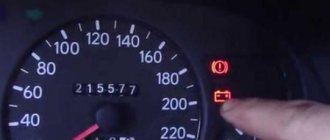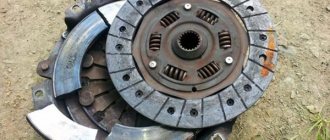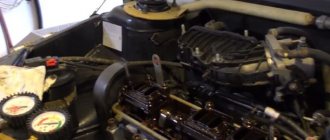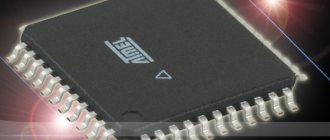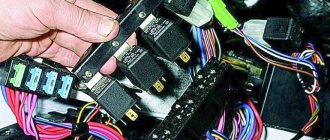Why can't you drive in neutral with a manual transmission?
Where do the roots of these disagreements come from? The fact is that in ancient times, vehicles were equipped with not very powerful engines, which overheated significantly when driving. Therefore, there was a driving style in which it was necessary to let the engine cool by reducing its speed. This was done by turning on the neutral gear.
In addition to the fact that on older engines this caused some cooling, but fuel consumption in this mode also decreased slightly. The logic here is simple. Less revolutions means less consumption. Today the situation with engine power is completely different. They are powerful and have the best cooling system.
Therefore, with a working cooling system, it is not necessary to drive in neutral to avoid overheating. Now, if the cooling does not work, then it is simply necessary to drive at a minimum speed so that the temperature does not go into the red zone. Moreover, the “heart” of a modern car is designed for a much higher number of revolutions than that of its ancestors.
Automatic transmission modes
Before we begin to understand the essence of neutral on an automatic transmission, let’s remember what gears exist in modern automatic transmissions.
In most modern car models with an automatic transmission, there are 5 positions, marked with letters on the operating panel next to the selector lever.
- The main position of the gear selector in automatic transmission, which ensures the vehicle moves along the road, is D, or Drive;
- Parking position – P stands for Turns on when the vehicle stops;
- Neutral mode N, or Drivers nicknamed it neutral. We will talk about it in more detail below.
- Reverse gear is marked with the letter R, which means Reverse.
- OVERDRIVE transmission, marked on the panel with the letters O/D. Not available at all checkpoints. On five-speed automatic transmissions, overdrive can be turned off by simply pressing the button.
Read
: How to drift automatically
Coasting safety
Next, it’s worth speculating about how safe it is to coast. The Rules have a definition of driving safety, which boils down to the fact that you need to drive correctly in order to avoid accidents. There are three ways to maneuver in neutral that will help avoid an accident:
- Changing the direction of movement by turning the steering wheel;
- By braking with both the service brake and the engine (by releasing the gas pedal);
- Increasing speed and pressing the gas pedal.
How to learn to drive a manual transmission: All points, from A to Z
Today I want to tell you how you can quickly learn to drive a car with a manual transmission (or manual or standard transmission). With this detailed guide, you'll be able to start your car, get it moving, and then shift between gears without any problems. Don't be discouraged if you don't succeed right away. It also took me a while to get used to the manual box, but believe me, it’s worth it!
Practice, practice and more practice! Good luck!
At the end of the article you will find the most frequently asked questions about manual transmission and basic tips on how to drive a manual transmission.
Seven steps to your first manual ride
- 1. Find a good paved area where there are no people around so you can practice your riding.
- 2. While the car is not started, examine the transmission.
- 3. Depress the clutch and start the engine.
- 4. Shift the gear to first gear.
- 5.Slowly release the clutch until the car begins to move gradually.
- 6. With your left foot still on the clutch, now add some throttle by pressing the pedal with your right foot until the tachometer reads 1,000 or 2,000 rpm.
- 7. Now slowly release the clutch, but keep your right foot on the gas pedal.
If you press the gas pedal enough, the car will start moving forward.
How I learned to drive a car with a manual transmission
I've always wanted to learn how to drive a manual because I think it's cool. When I got my first manual car in 2012, I couldn't wait to get behind the wheel. I read some instructions and thought it wouldn't be that hard to learn. How wrong I was. My car, with its 412 horsepower and 390 torque Coyote engine, was difficult to drive. I went left and right.
My problem was that all the instructions I found online taught me to "lower the clutch slowly." I did so, but the car still shook. In the end, I realized that I don't have to press the gas to make the car go. Depending on the speed at idle, that is, when you do not press the gas pedal, you just need to release the clutch a little and the car will go.
I played with the clutch a little and felt the so-called clutch moment, that is, when the car is moving, but the clutch asks to add more gas. At this point, you feel a slight resistance and vibration from the clutch pedal; the car asks for more gas so that you can drive, releasing the clutch completely. When I tried this new method, I was able to start the car very smoothly. It's too bad no one told me about this before.
Adjust your mirrors
Adjust your side and rearview mirrors so you can see what's behind you and to the sides. Make sure you are in an area where no one is around and there is enough road ahead of you that you can reach different speeds without crashing into anyone.
Explore the gearbox
When the engine is not running, move the gearshift lever. The speeds on the lever are arranged in an "H" shape. However, the return stroke will be located differently in different levers. In this case, the reverse move is to the right and down.
Learning pedals
The far left one is not a pedal, it is a place where you can place your foot while moving. The clutch pedal is the second from the left. Next comes the brake pedal and the one on the far right is the gas pedal.
How to start a car in neutral gear
In order to start the car, the lever must be at neutral speed (the horizontal part of the lever), and the clutch pedal must be kept depressed at all times. To make sure you're in neutral, wiggle the lever a little.
To start the car, press the clutch pedal, hold it down and turn the key. Make sure the car is in neutral before releasing the clutch. Neutral gear is marked on the lever with a horizontal line. You can check if your gear is in neutral. To do this, lightly rock the lever left and right. If the lever moves, then you are in neutral.
How does a gearbox work in a car?
Well, now the engine is running, you are sitting, doing nothing and not going anywhere, which is not so bad to begin with.
Shifting to first gear
Hold the clutch and shift the lever to first gear. Usually this is a movement to the left and up from yourself.
Now, while holding the clutch pedal, shift the lever to first speed, that is, to the left and away from you.
Don't drop the clutch, otherwise the car will stall! Don't worry, you'll get the hang of it over time!
Hand brake
Some cars have a handbrake, parking brake, or brake control button (see above). Many other machines have a lever with a release button.
So, the car is moving. Now you need to make sure the handbrake is off. Since you are driving on a flat road, the car will still not roll away while you are thinking about what to do next.
Release the clutch and give gas
Release the clutch until you feel the car begin to move forward a little. Press the gas pedal until the tachometer shows 1,000 - 2,000 rpm.
When you are in first gear, slowly release the clutch until you feel the car start to move. This is the hardest part!
You must learn to feel this gripping moment when the machine begins to vibrate a little. Practice until you can automatically feel this moment, thanks to this, it will be easier for you to learn how to drive a mechanic.
Slowly, gradually increase the gas by pressing the gas pedal. There should be enough gas for the tachometer needle to stop between 1 and 2, that is, 1,000 and 2,000 rpm. If you give too little gas, the car will stall. If there is too much gas, you will start to burn the clutch. This often happens to beginners, but if this happens constantly, the clutch may wear out over time.
Release the clutch after shifting into gear
When you have added a little gas, do not rush to completely release the clutch. Release it when you feel the speed turn on. You can understand this by the vibration that you feel in your legs and that comes from the pedal. When this moment comes, you can completely release the clutch and drive calmly, as in a car with an automatic transmission.
Congratulations! You started a car with a manual transmission! It was easier for me to learn how to ride a manual once I learned about grip timing and how to feel it. I'm sure this is the easiest way to learn to drive a manual car.
: how to drive a manual car
In this video you will see what parts in the car you need to become familiar with, how to release the clutch pedal and how to press the gas pedal.
To shift from first to second speed, press the clutch and pull the lever down towards you. To shift to third speed, press the clutch pedal and pull the lever up and to the right.
I find changing gears much easier than trying to start the car. Just look at the lever and learn all the speeds. You shift from 1 to 2, to 3, 4, 5 and 6 speeds (if the car has six speeds).
How to switch to the highest speed? It's almost the same as starting a car, only much easier.
Let's say you are driving in first gear and are about to shift to second. Your actions:
- 1. Press the clutch, then shift the gearshift lever to second gear. In most cars, to change from first gear to second, you need to pull the lever towards you.
- 2. Slowly release the clutch until it engages, then add gas.
- 3. Release the clutch pedal and continue driving.
The transition from second to third and then fourth gear is the same and even easier. In order for the transition to be absolutely smooth, you will have to learn to balance the clutch and gas well. But all this comes with practice.
Shift into overdrive when engine reaches 2,500 rpm
In order to move from first gear to second and higher, monitor the tachometer readings. When the arrow points to 2,500 - 3,000 rpm, the car's engine is ready to shift to a higher gear.
How do you know when to change gear? Here you need to look at either the number of revolutions per minute or the speed at which you are moving. Typically, gear changes occur at 2,500 - 3,000 rpm.
As for speed and gear shifting, it all depends on the car, so check your car's manual. In general, speed is not as important for upshifts as it is for downshifts.
Over time, you will learn to understand by the sound of the engine and the general behavior of the car on the road when you can change gear.
The most frequently asked questions about manual transmission
How to start a car with manual transmission?
- 1. To start the engine, go into neutral. This is a horizontal line on the gearshift lever. Move the lever slightly to make sure the gear is in neutral.
- 2. Make sure the handbrake is on.
- 3. Please note that some cars will not start in neutral unless you keep the clutch pedal (left pedal) depressed.
- 4. Turn the ignition key.
- 5. You started the car!
How to drive a car with a manual transmission?
- 1. Once you have started the engine, keep the clutch depressed.
- 2. Shift the gearshift lever to first gear, that is, to the left and away from you.
- 3. Release the handbrake or parking brake.
- 4. Slowly release the clutch pedal and add gas.
Watch the tachometer needle. You can fully release the clutch when the needle shows 1,000 - 2,000 rpm. - 5. Continue driving in first gear.
- 6. If the car stalls, raise the handbrake, press the clutch pedal, move the lever to neutral and start the engine again.
My car stalled. what to do?
First, you need to calm down. There's nothing wrong with the car, you didn't break anything. Simply press the clutch pedal again and turn the key. The car will start again. Just make sure the lever is in neutral and do the same steps again.
Double Clutch Shift Pattern, Why Use It, How It Works, and How to Apply It in Everyday Situation?
Why did the car stall? You put the lever into first gear, but did not give enough gas to move the car. The car wanted to go, but it didn’t have enough gas and it stalled.
How to stop a car with a manual transmission?
You don't have to press the clutch pedal every time you step on the brake pedal to stop the car. But if you need to come to a complete stop at a sign or at a traffic light, then press the clutch when the car has almost completely stopped moving and move the gearshift lever to neutral, otherwise the car will stall.
How to reverse?
- When the car has completely stopped, press the clutch pedal and move the lever to the reverse position.
- Look in the rearview mirror and make sure there are no obstacles behind you.
- Release the clutch slightly when you feel it reverse.
- When driving backwards, always look in the rearview mirror.
Why drive a car with a manual transmission?
So what are the benefits of a manual transmission?
- You can completely control the speed; a manual car is more economical and efficient than an automatic car.
- Since you control the speed, you can accelerate faster and change speeds whenever you want.
3. Driving a manual may seem difficult at first, but after a couple of weeks it will become second nature.
Source: https://1gai.ru/baza-znaniy/519199-kak-nauchitsya-ezdit-na-mehanicheskoy-kpp-vse-punkty-ot-a-do-ya.html
Acceleration is not possible
The driver can use the brakes or turn the steering wheel at any time. But to speed up (often you need to speed up to avoid an accident) will no longer work, because you need to engage the gear and press the gas pedal to the floor, and this is a waste of precious time, when not even a second, but a fraction of a second matters.
As a result, neutral gear does not allow you to use all three methods in order to avoid an accident. This may be tantamount to the fact that the car simply does not have a brake pedal or steering wheel. This way, it will probably be clearer for those drivers who want to travel as safely as possible.
What is the N position used for?
One of the most common questions among those who have recently switched to an automatic transmission is why a neutral is needed on an automatic transmission and in what situations it is used.
Neutral on an automatic transmission is significantly different in its application from the use of neutral on a manual transmission.
Very often, drivers who have previously driven manuals all their lives, out of habit, turn on neutral at traffic lights, and then switch to Drive again. This is a common mistake that can lead to serious negative consequences.
Considering the difference between automatic transmission and manual transmission, you need to understand in more detail why you need and when you do not need neutral speed on an automatic transmission. The following situations will be considered separately:
- when coasting;
- at traffic lights;
- in parking lots;
- when towing a car.
Before we discuss this and understand what the neutral position on the machine is for, it is important to consider one thing.
By moving to position N, the clutches in the torque converter disengage, and the interaction between the internal combustion engine and the wheels is broken. The torque converter continues to rotate, but does not connect the chassis elements to the engine.
Neutral is mainly used in situations where you need to unlock the wheels. Most often, N mode is selected when it is necessary to tow the car, or when servicing the car at a service station.
Coasting
Let's start with whether it is possible with an automatic transmission, as in the case of a manual transmission, to drive in neutral down hills and long descents. Motorists who prefer manual transmissions are accustomed to saving fuel in this way. After all, when coasting, gasoline is not consumed.
But here it is important to understand what will happen to the automatic transmission if you move the selector to the neutral position.
At this moment, the oil supply to the internal components of the box will stop, the internal pressure will change, and the elements will rotate dry.
Since an automatic transmission has a number of rubbing elements that constantly need lubrication in the form of gear oil, operation without lubricant leads to accelerated wear of parts. Surfaces rub against each other, heat up, wear out and fail.
As you understand, because of this, it is categorically not recommended to roll down a hill in neutral if we are talking about an automatic transmission.
Likewise, you should not suddenly turn on the Drive position when descending. This will literally lead to the destruction of the clutches. After all, when switching to Drive, there is a strong push from the oil pump. This phenomenon is actually detrimental to the torque converter unit.
If you move downhill automatically, then only with the lever in Drive mode. You just need to release the gas pedal so as not to waste extra fuel. In this position, the box will not be damaged, since it will continue to be supplied with the right amount of oil.
Regarding coasting on an automatic transmission with neutral engaged, the following conclusions can be drawn:
- when switching to N, the box components stop being lubricated;
- the driver has fewer options for maneuvers, since he will not be able to quickly pick up speed to avoid another car or other obstacle;
- the transition from D to N can be considered prohibited, since the pressure increases sharply.
Such actions lead to only one thing. This is an automatic transmission failure.
Traffic lights and traffic jams
There is the most important and most common misconception regarding whether it is possible to put the automatic transmission in neutral while in a long traffic jam or stopping at a traffic light.
In the case of mechanics, everything is extremely clear. When approaching a red light, or when stopped due to traffic, you can safely put it in neutral and then shift into gear to continue driving. Neutral is turned on to allow you to temporarily remove your foot from the clutch and give it a rest. Plus it’s better to start from first gear.
But you need to figure out what will happen if you put neutral gear in such a situation on the automatic transmission.
To understand this, you need to understand the essence of how an automatic transmission works. By turning the selector to the Drive position, the torque converter constantly builds up pressure, which helps transmit torque. In this position, all internal elements are actively lubricated with transmission oil. If you do not hold the gas pedal down, the torque converter simply goes into the so-called green operating mode. This means that only one process is taking place. And this is lubricating the elements with oil.
If you select neutral, then the input and output shafts will open and the lubrication process will be interrupted. The pump will not supply oil to internal components. When the traffic light turns green, or when driving in a traffic jam, the driver naturally switches to the Drive position. Such a switch creates extreme stress for the box, since the pressure instantly changes.
The internal components of the gearbox have to perform additional actions and movements, which negatively affects their condition and accelerates wear.
By analogy, the issue of prolonged downtime in a traffic jam is considered. You shouldn’t keep switching from position D to mode N and back several times in 5 minutes.
If you have to stand in a traffic jam for a long time without moving, it is better to switch to parking mode or completely turn off the engine.
Actions according to this scheme will protect the automatic transmission from premature wear and breakdown. You cannot stand in neutral in traffic jams or at traffic lights. In theory, this can be done. But there is no need for this. You will only provoke unnecessary problems with the machine.
Parking
Separately, we need to talk about the possibility and necessity of moving the automatic transmission to the neutral position when the car is parked or parked.
Owners of manual cars often abuse the fact that they start squeezing the gas to the floor while stationary. Hence the logical question regarding whether it is possible to accelerate if you are in neutral on the automatic transmission.
In fact, opinions differ on this matter. Some believe that this is strictly prohibited. Others are confident that nothing bad will happen. And the truth is in the middle. You can gas, but only with wisdom and caution. Old automatic transmissions are more susceptible to such actions and do not like excessively high speeds in neutral. Many modern cars have a cutoff on the tachometer, above which the engine cannot be turned in neutral.
But this is the advice. It’s not worth accelerating on the spot unless necessary.
As for being in the parking lot, before you turn off the engine on the automatic and leave the car in neutral, make sure whether this is possible.
For parking and parking, the automatic transmission has a special gearbox mode P or Parking. This is what needs to be used.
But it happens that this mode does not work, there are some problems. This is rare, but it cannot be ruled out. In this situation, a neutral comes to the rescue. The box can be placed in this position by simultaneously applying the parking brake. But as soon as necessary, be sure to resume P mode and try to use only it.
As for starting after parking on N, then you will need to turn off the parking brake and depress the brake pedal before starting the engine. That's it, you can hit the road.
Towing
And one more equally important question. It concerns whether it is possible to tow a car with an automatic transmission while driving in neutral.
It is not advisable to tow a car with an automatic transmission that cannot drive itself. This is stated in all manuals. It's best to call a tow truck.
But the manual says that towing is allowed if necessary. There are some restrictions:
- the box must be switched to neutral;
- travel speed does not exceed 35-50 km/h;
- The maximum towing distance is no more than 50 km.
Some even limit the distance to 10-20 km. If the service station or garage is further away, it is better to call a tow truck. If partial loading is performed, then the drive wheels need to be loaded onto the tow truck.
You can tow other cars and trailers automatically. To do this, it is only recommended to switch to Overdrive mode and adhere to the general rules of towing, compliance with weight restrictions, speed and distance.
How to brake correctly with manual brakes
Summarizing the above, we can say that it is safest to brake with the gear engaged. This is the so-called combined braking, which saves fuel and prevents the wheels from blocking. The latter, of course, is more relevant for older cars that are not equipped with ABS. The engaged gear also allows you to have a reserve of traction, which can be useful when accelerating or braking the engine.
It is advisable to engage neutral gear only when the car is completely stopped, while proper braking is carried out in gear until the car comes to a complete stop.
Electronics help the coasting
With the massive introduction of electronic injection and stabilization systems, these two problems were overcome. The engine no longer stalls at idle, and the stabilization system and ABS help the wheels brake correctly when cornering. Therefore, coasting is now not prohibited and is even recommended by environmentalists. After all, driving in neutral helps save fuel and reduces harmful emissions into the atmosphere.
Article on the topic
A blow to stereotypes. Why you shouldn't be afraid of manual transmissions Many automakers even imitate the coasting mode for their automatic and robotic transmissions. Usually it is “hardwired” into the IVF program. When the gas pedal is released, the preselective gearbox opens the clutch, and the engine loses direct connection with the drive wheels. The tachometer needle drops by 800 rpm, causing the car to roll forward steadily. It is claimed that such runs save 3-5% of fuel, depending on the intensity of coasting use. Electronics monitor the process of wheel rotation and, if necessary, correct the vehicle’s trajectory.
However, it must be remembered here that in sports cars with all-wheel drive transmission and active sports differentials on the rear axle, coasting is only allowed as a temporary means of saving. It cannot be used for sport driving. Active differentials, which distribute power between the right and left rear wheels, only operate when the vehicle is in gear. At the limit of the adhesion properties of rubber, traction on the drive axle is mandatory. And if someone decides to put the gear into neutral while drifting and make an untied turn in order to save fuel, they would be wrong. The car will simply be thrown onto the side of the road and then into a ditch.
Therefore, the sporty driving style does not like to roll up. He needs constant gas. But with measured movement without incident, rolling up is quite appropriate.
Neutral transmission on an automatic transmission: why is it needed, when can and cannot be turned on
Hi all! Modern cars are equipped with different gearboxes, but some components remain the same. For example, this is a neutral gear on an automatic transmission, on a manual transmission and on the same sequential gearbox.
Having not studied the principle of operation, motorists who previously drove a manual gearbox begin to ask all sorts of questions due to the habits formed at the previous checkpoint.
In particular, not everyone understands why neutral is needed on an automatic transmission, whether it is possible to coast in this case, and how to use this gear correctly so as not to harm your own vehicle.
But not everything that can be done with neutral on a manual transmission can be done on an automatic transmission. That's what this material was prepared for. Today we’ll talk about such a unit as an automatic transmission and neutral on it.
Why is there neutral on the automatic?
You probably know why you need a neutral on the box. If not, then I remind you.
If you suddenly forgot which letter is used to designate neutral gear, then I will say that it is N.
When the gearbox lever is moved to the neutral position, the torque from the engine installed on the car is not transmitted to the wheels. Thus the car does not move.
Neutral on manual transmissions is used almost constantly and everywhere. And precisely at traffic lights, when idle in traffic jams, etc. In the case of an automatic transmission, the role of neutral is significantly simplified. Much fewer functions and responsibilities are transferred to it compared to mechanics. This is why difficulties arise when switching from a manual transmission to an automatic transmission. Then it turns out that the box is shaking and breaks down, because the driver simply mismanaged the neutral gear, transferring habits from the mechanics.
There are a number of drivers who, during the entire period of operating an automatic transmission, have never even engaged neutral.
However, this mode is still extremely necessary on any car equipped with an automatic transmission.
Neutral on an automatic transmission plays a key role when towing a car.
If you look at the instruction manual, you can find useful and important information there. Automakers recommend turning on the N position on the box when towing.
In fact, the automatic transmission drives in neutral when towing, but at a speed not exceeding 50 kilometers per hour.
There is also additional information in the recommendations. According to the requirements of automakers, they advise towing a car with neutral on for no more than 50 kilometers. This is the maximum permissible distance. If you have to cover more serious distances, then you should use the services of a tow truck or towing with raised drive wheels. Otherwise, serious malfunctions may occur.
It's hardly worth risking the integrity of the box.
Neutral can also be used in the riser if there are problems with the parking mode. But this is a last resort. Before parking the car, make sure that mode P is selected.
Neutral in traffic jams and traffic lights
If you are a former owner of a car with a manual transmission, then switching to a CVT or automatic transmission may cause some problems in the initial stages of operating an automatic transmission.
A very common habit is to act at traffic lights and in traffic jams.
All manual drivers know that when approaching a traffic light or getting into a traffic jam, it is necessary to move the gearbox handle to the neutral position. And start from there when the green light turns on or the traffic jam moves. This is what motorists do to be able to remove their foot from the clutch. But the automatic machine simply does not have this pedal. Therefore, there is also no need to switch to a neutral position. Everything is extremely simple. But we need to study the issue in more detail.
It is necessary to understand why this mode cannot be enabled. When the driving mode is activated (Drive, Drive or D), the torque converter builds up pressure in the box, which facilitates the transmission of torque.
In this mode, all internal elements are actively lubricated. If the gas pedal is not depressed, the transformer is in the so-called green zone. Then there is only lubrication, and nothing more.
If you switch to neutral, both shafts (output and input) will open. This will stop the lubrication process.
When you see a green light turn on in front of you, or realize that the traffic in a traffic jam is about to start moving, by switching to neutral first and then switching to drive again, you will create conditions of serious stress for your transmission. This is due to the fact that the pressure inside the system will change dramatically. Therefore, the automatic transmission components will have to perform additional manipulations and movements, which will ultimately affect the life of the entire gearbox.
The same should be considered when you are in a traffic jam. In traffic jams there is no need to switch from drive to neutral.
"Gluttonous" brake pedal
It is known that braking a car also requires gasoline consumption, just like acceleration. Many drivers forget about this, making hundreds of unnecessary brake presses a day.
There are two ways to reduce the number of times you use the brake pedal. Firstly, increase the distance to the car in front, so that you do not have to adapt to its driving style, and you can maintain the most uniform speed.
Secondly, stopping only with the brake pedal is not the most economical and practical option. The best way to drive a manual is to master engine braking and combine it with the use of the brake pedal. If you are not familiar with how to properly brake with an engine, then watch this short video tutorial to avoid making mistakes.
Recommendations for using “N” for novice drivers
What does a novice driver need to know first? The engine should only be started in automatic mode from park or neutral (here is another function of this transmission). If you try to start in the drive position, the engine will not start because it is locked. Let the engine run, let the oil pump through the system, lubricate all components, then proceed to drive or reverse.
Novice drivers, especially those who have driven manuals for a long time, often make the same mistake. When stopping, turn off the engine, leaving the gear lever in position D. From this position, we repeat, the engine will not start. Shift the lever to neutral or park, only then start the engine.
Another important point: if you start the engine with the automatic transmission in neutral, be sure to depress the brake pedal so that the car does not accidentally roll. In the parking position of the lever, this is not necessary, since the wheels are initially locked in parking.
Advice from a professional
If you need to move quickly and the automatic brakes, try holding the brake and gas pedals for a couple of seconds before you start moving, then suddenly release the brake.
Conclusion. The neutral position of the selector on the automatic transmission is an emergency position of the automatic transmission, used as a last resort when there is no other way out. In ordinary, everyday operation of the vehicle, it is advisable to forget about it.
( 7 ratings, average 4.43 out of 5 )
Why is driving in neutral not recommended?
Those who believe that driving in neutral will help significantly save your budget, and that this type of trip will also help the engine, are mistaken.
In order to give an accurate answer to this question, it is necessary to understand the technical characteristics of the car and how it works. If you look inside and get acquainted with the technical characteristics, you can immediately understand that this is a mistaken opinion that driving in neutral protects the car and the engine.
Most people do not share the concept of “driving in neutral” and “coasting”. As soon as the car begins to coast in gear, its wheels and the crankshaft are engaged. Thus, the engine speed begins to decrease. Gasoline stops being supplied to the cylinders and is automatically turned off. That is, fuel economy is evident. However, as soon as you shift the gear to neutral, the wheels immediately lose contact with the engine. It starts to work at idle speed, which allows it not to stall. So it turns out that when the car is moving in neutral gear, it can spend from 1 to 3 liters per 100 kilometers. During a trip, when the gas pedal is released but the gear remains engaged, the consumption will be about 0 liters per 100 kilometers.
What happens to the car
Be sure, when choosing a speed limit, take into account not only the financial side (it is believed that when driving in neutral gear you can save gasoline), but also the condition of the road surface, weather conditions and the stability of your car.
The whole point of this method comes down to the fact that whether you release the clutch pedal or not, the input shaft will rotate or not. The gears will not engage during this period. Bearings, accordingly, do not receive load and wear out much longer.
1 comment
All these strange ways to save money, such as driving in neutral, are in no way suitable for a big city. And generally doubtful. In a big city, there are constant traffic jams, the “acceleration-braking” mode has to be used often, and at the same time, gasoline consumption will be high anyway. Buy an automatic transmission and the smallest and lightest car you can find - then you won’t burn a lot of fuel in the city cycle.
Proper operation of the gas pedal
The second most important saving point is the smooth use of gas pressure. First of all, this applies to accelerating a car from a standstill after it has come to a complete stop. The smoother the start, the less gasoline the engine uses for this.
Further acceleration should also be as smooth as possible. When changing gear, do not “press” the gas pedal suddenly, try to increase the pressure gradually . Remember that the optimal speed when driving is from 2000 to 2500, and it is in this interval that the most noticeable gas savings are achieved when driving a manual.
If the traffic is quite slow, try to maintain a smooth rhythm of driving in 1st or 2nd gear, minimizing the occurrence of complete stops. The greatest fuel consumption is during acceleration. Therefore, try to feel the speed of the flow, and instead of stopping and starting again several times, it is better to drive smoothly in first gear, which will be much more economical.
Stopping at a traffic light
The main advantage of driving a car with an automatic transmission is the absence of the need to engage the gears yourself and depress the clutch. Acceleration occurs smoothly under the influence of only the gas pedal. But when stopping, you must always keep your foot on the brake if mode D is selected. In a big city you have to stop at almost every traffic light, and the driver gets tired of constantly pressing the pedal.
In this situation, the question arises: is it necessary to switch the automatic transmission to neutral at a traffic light if the stop may take more than 2-3 minutes. A short break in the operation of the unit will not harm, and it will also prevent unwanted overheating of the machine. There is nothing dangerous in such an algorithm of actions using “neutral”, if it is not abused.
Most mechanics and automatic repair specialists are against moving the selector from position D to neutral. It is not recommended to start driving suddenly after the car has been at neutral speed for a long time.
In order for the driver to understand whether it is necessary to switch the automatic transmission to neutral, and what is the point of this, you can refer to the data in the table, which describes the processes occurring with the unit inside while the car is parked.
| Drive mode selected | Neutral mode selected |
| The automatic transmission is in the standby phase, oil is continuously pumped into the automatic transmission, the parts are constantly lubricated | There is no internal fluid pressure in the automatic transmission, the parts are not lubricated |
| Shafts from the engine and automatic transmission work in rigid engagement | Shafts are open |
| The automatic transmission is in working condition and is ready to transfer torque from the engine to the wheels at any time | The automatic transmission is disabled, and a sudden start will become a stressful situation for all moving mechanisms of the unit |
| The automatic transmission may overheat when parked for a long time in operating mode. | The automatic transmission does not heat up, the temperature of the transmission fluid decreases |
For those who are completely uncomfortable keeping their foot on the brake, you can switch to neutral if the stop lasts no longer than five minutes. The optimal way out of the situation would be to turn on “parking”, in which the automatic transmission continues to operate in standby mode. This method of parking at traffic lights is less energy-consuming, but no less convenient.
Why is this necessary?
One of the main reasons why a driver should shift to neutral when going downhill is to save fuel. According to some drivers, when engaging neutral gear or even simply depressing the clutch pedal, the engine begins to idle, which leads to the lowest possible fuel consumption. There is also an opinion that such actions will increase the service life of the motor, since it will be less loaded.
Photo: https://www.drive2.ru/
Recommendations for novice drivers
- If the driver decides to use neutral gear at a traffic light, you must first switch the selector from “N” to “D”, feel a slight push, and then press the gas.
- Shifting the automatic transmission lever before driving should be done with the brake pedal pressed.
- If you have to stand in a traffic jam for a long time, it is better to switch to “parking” and not use neutral.
Related articles:
- The main reasons for uneven tire tread wear Car tires, like all parts in a car, have their own specific service life; as a rule, with careful use and normal quality, tires last from 4 to 6 years. But […]
- The importance of KBM when taking out an MTPL insurance policy The concept of KBM was introduced by the Russian Union of Auto Insurers (abbreviated RSA) in 2013, the bonus-malus coefficient (this is how the abbreviation stands for) is intended to […]
- New MTPL forms from July 1, 2021 Lately, forgery of auto insurance policies has been common, and in order to solve this problem, it was decided to introduce new MTPL forms from July 1, 2016. New OSAGO forms with 1 […]
Extra expenses
To make sure that it is inappropriate to travel at neutral speed in order to save money and preserve the engine, you need to know the technical characteristics of the vehicle:
- When a car coasts at low speed, the crankshaft is turned on, engine speed is reduced, fuel is not supplied to the system, so in this case it is possible to save money.
- When the gearbox is switched to neutral, the connection between the wheels and the engine is lost, the engine goes to idle, which does not allow the car to stall. In this case, excessive fuel consumption occurs.
In traffic jams
Modern life in megacities cannot do without daily traffic on the roads. Car drivers spend most of their journey to and from work in traffic jams. In high-speed traffic, an automatic transmission greatly facilitates the process of driving a car for its owner, but not in the case of a dense stream of cars stuck in a traffic jam. Drivers have to hold the brake pedal for a long time, which can cause fatigue.
When wondering whether it is possible to put neutral on an automatic transmission, drivers hope to make their life easier and free their legs from constant stress. When moving the gearbox selector to neutral, you need to remember that the car can roll downhill if it is standing on an uneven surface. To prevent this from happening, the handbrake must be in the raised position.
Is it possible to put the automatic transmission in neutral at traffic lights, and what does such frequent gearbox switching lead to, auto mechanics at the service center will tell you. Each unnecessary shift of the gearshift knob to neutral forces the unit to perform numerous additional operations that bring internal mechanisms and parts closer to premature wear.
Driving in neutral is usually uncontrollable and consumes more resources
Automotive experts say that driving in neutral with an injection-type engine usually consumes a significant amount of gasoline, the amount of consumption is much greater than when the car is coasting. Most car enthusiasts often confuse these concepts. There is no need to use the gas pedal while coasting. The car will move in gear, and the engine speed will gradually decrease.
In this case, gasoline will stop flowing into the cylinders automatically. While moving in neutral gear, the engine will run at idle speed, while it will begin to consume fuel, and when coasting without the gas pedal, almost no fuel is supplied. Also, coasting in gear can partially save the oil from burning out on the cylinder walls, which will increase engine life.
